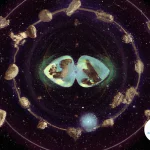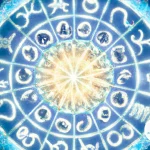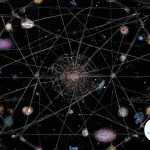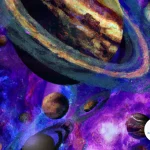Do you ever wonder why some relationships seem to effortlessly flourish, while others are constantly filled with tension and conflict? The answer may lie in the influence of planetary aspects on relationship compatibility. Planetary aspects refer to the angular relationships between the planets in a person’s birth chart and how they interact with the planets in their partner’s chart. These aspects can have a profound impact on the dynamics of a relationship, shaping everything from communication styles to emotional connections. In this article, we will delve into the fascinating world of planetary aspects and explore how they can affect relationship compatibility. So, let’s dive in and discover the hidden influence of the stars on our love lives!
The Basics of Planetary Aspects
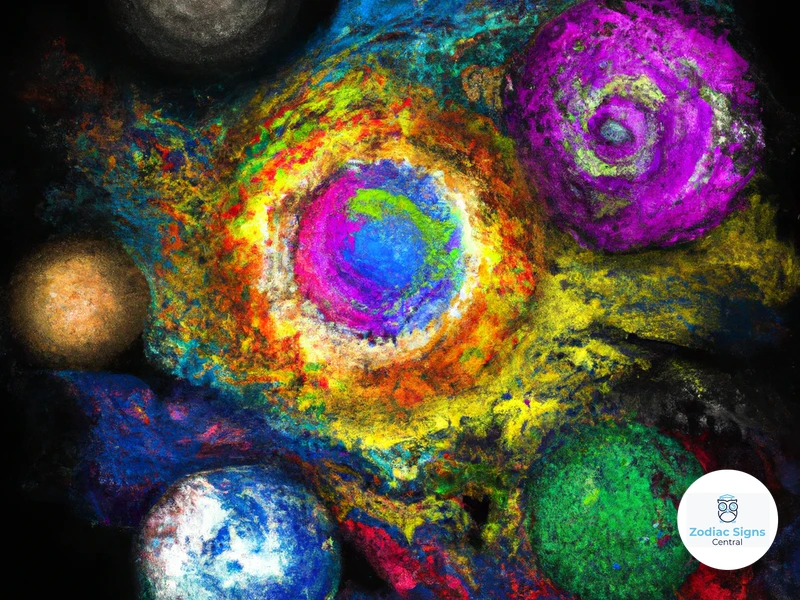
When discussing astrology and relationship compatibility, it is essential to understand the basics of planetary aspects. Planetary aspects refer to the angular relationships between the planets in a person’s birth chart. These aspects determine how the energies of the planets interact and can greatly influence various areas of life, especially relationships.
There are several key aspects that astrologers analyze when assessing relationship compatibility, including conjunctions, squares, trines, sextiles, and oppositions. Let’s take a closer look at each one:
1. Conjunction: A conjunction occurs when two planets are in the same zodiac sign or are very close together. This aspect intensifies the energy of the planets involved, creating a powerful and concentrated influence in the person’s life. For example, a Sun-Moon conjunction indicates a strong connection between the conscious and unconscious aspects of a person’s personality.
2. Square: A square aspect creates tension and challenges between two planets that are 90 degrees apart. This aspect can lead to conflicts and struggles within a relationship, as it highlights areas of friction and disagreement. For instance, a Venus-Mars square may indicate difficulty in harmonizing actions and desires with emotional needs.
3. Trine: A trine occurs when two planets are 120 degrees apart. This aspect signifies harmony and ease between the planets involved, creating a natural flow of energy. It represents areas of compatibility, shared values, and mutual understanding. For example, a Mercury-Jupiter trine can contribute to open and expansive communication in a relationship.
4. Sextile: A sextile aspect occurs when two planets are 60 degrees apart. This aspect represents opportunities for growth, cooperation, and positive interactions. It helps to facilitate communication and connections between individuals. An example of a beneficial sextile is a Saturn-Uranus sextile, which blends structure and innovation, creating a harmonious balance in a relationship.
5. Opposition: An opposition happens when two planets are 180 degrees apart. This aspect creates a strong awareness of differences and contrasts between individuals. It can lead to challenging dynamics as both parties strive to find a balance between opposing forces. For instance, a Neptune-Pluto opposition may bring up themes of power struggles and transformative experiences within a relationship.
Understanding these different aspects is crucial in astrology as they provide valuable insights into the dynamics and compatibility of a relationship. To dive deeper into the topic of astrology and relationship compatibility, you may also find it interesting to explore concepts such as the healing power of crystals in astrology or seek guidance in finding your astrology soulmate.
1. Understanding Planetary Aspects
Understanding planetary aspects is fundamental when exploring the intricacies of astrology and relationship compatibility. Here are some key points to consider:
– Planetary aspects are the angular relationships between planets in a birth chart, and they provide insights into how the energies of different planets interact.
– Each aspect has a unique influence on a person’s personality traits, behaviors, and relationship dynamics.
– Conjunctions occur when two planets are in the same sign or are very close together. They amplify the energies of the planets involved and create a powerful impact on an individual’s life. An example of a conjunction is the Sun-Moon conjunction, which signifies a strong blend of conscious and unconscious aspects within a person’s personality.
– Squares represent tension and challenges between two planets that are 90 degrees apart. These aspects can lead to conflicts and struggles within a relationship, highlighting areas of friction and disagreement. For instance, a Venus-Mars square may indicate difficulties in aligning actions and desires with emotional needs.
– Trines occur when planets are 120 degrees apart and signify harmony, ease, and compatibility between the planets involved. They represent areas of shared values and mutual understanding. For example, a Mercury-Jupiter trine can contribute to open and expansive communication in a relationship.
– Sextiles are formed when planets are 60 degrees apart. They indicate opportunities for growth, cooperation, and positive interactions. Sextiles facilitate communication and connections between individuals. A Saturn-Uranus sextile, for instance, combines structure and innovation, creating a harmonious balance in a relationship.
– Oppositions arise when planets are 180 degrees apart and bring awareness of differences and contrasts between individuals. These aspects can lead to challenging dynamics as both parties strive to find a balance between opposing forces. For example, a Neptune-Pluto opposition may trigger power struggles and transformative experiences within a relationship.
Understanding these aspects is crucial for delving into the complexities of relationship compatibility in astrology. By analyzing planetary aspects, astrologers can provide valuable insights into the dynamics and challenges present in a relationship. For further exploration, you may find it helpful to discover the healing power of crystals in astrology, seek guidance in finding your astrology soulmate, or explore compatibility between fire sign relationships.
2. Key Planetary Aspects Explained
When exploring the realm of astrology and relationship compatibility, it is important to delve into the key planetary aspects that play a significant role. These aspects offer valuable insights into the dynamics and connections within a relationship. Let’s take a closer look at some of these key planetary aspects:
1. Sun-Moon Aspect: The Sun-Moon aspect represents the connection between a person’s conscious self (Sun) and their emotions and inner world (Moon). The aspect can range from harmonious (trine, sextile) to challenging (square, opposition), influencing how individuals express themselves emotionally and how they relate to their partner’s emotional needs. A harmonious Sun-Moon aspect fosters emotional compatibility and understanding.
2. Venus-Mars Aspect: The Venus-Mars aspect highlights the balance between love (Venus) and desire/sexual energy (Mars) within a relationship. A harmonious aspect promotes passion, attraction, and a healthy expression of love and intimacy. On the other hand, a challenging aspect may indicate conflicting desires or difficulties in aligning emotional and physical needs.
3. Mercury-Jupiter Aspect: The Mercury-Jupiter aspect influences communication and intellectual compatibility within a relationship. A harmonious aspect enhances open-mindedness, intellectual stimulation, and shared interests. It encourages growth and exploration through conversations and exchanging ideas. However, a challenging aspect might lead to misunderstandings or differences in communication styles.
4. Saturn-Uranus Aspect: The Saturn-Uranus aspect represents the integration of structure and freedom in a relationship. A harmonious aspect allows for a balanced blend of stability and innovation, with both partners respecting each other’s need for security and personal growth. Conversely, a challenging aspect may result in clashes between tradition and independence or struggles in finding a middle ground.
5. Neptune-Pluto Aspect: The Neptune-Pluto aspect delves into deep transformative energies within a relationship. A harmonious aspect can facilitate spiritual connection, shared dreams, and a profound understanding of each other’s inner worlds. However, a challenging aspect might signify power struggles, intense emotional issues, or the need for healing and transformation.
By exploring these key planetary aspects, we gain valuable insights into the intricate dynamics of relationship compatibility. Remember, astrology is a complex and multi-faceted field, and while planetary aspects provide insightful guidance, it is essential to consider the entire birth chart for a comprehensive analysis. As you continue your exploration of astrology and relationship compatibility, you may find it intriguing to learn about the healing power of crystals in astrology or seek guidance in finding your astrology soulmate.
3. The Role of Aspects in Relationship Compatibility
When it comes to relationship compatibility, the role of planetary aspects cannot be underestimated. These aspects play a crucial role in determining the dynamics and potential challenges within a relationship. Let’s explore the significance of aspects in relationship compatibility:
1. Influence on Compatibility: Planetary aspects have a direct impact on the level of compatibility between two individuals. Harmonious aspects, such as trines and sextiles, indicate a natural flow of energy and compatibility in various areas of the relationship. Challenging aspects, like squares and oppositions, signify areas of tension and potential conflicts that need to be addressed and worked on.
2. Energy Exchange: Aspects in a birth chart give insights into the way energy is exchanged between two individuals. Positive aspects enhance understanding, communication, and emotional connection, fostering a healthy and balanced relationship. On the other hand, difficult aspects can create hurdles in these exchanges, leading to misunderstandings, power struggles, and emotional imbalances.
3. Growth and Transformation: Aspects also play a significant role in personal growth and transformation within a relationship. Challenging aspects often bring forth lessons and opportunities for personal development. These aspects can create friction and challenge individuals to face their limitations, work on their weaknesses, and evolve on a deeper level. Harmonious aspects, on the other hand, support personal growth through ease and support.
4. Compatibility Assessment: Astrologers analyze the planetary aspects in both individuals’ birth charts to assess overall compatibility. They consider not only the aspects between the Sun and Moon but also other key aspects like Venus-Mars, Mercury-Jupiter, Saturn-Uranus, and Neptune-Pluto. By examining the aspects, astrologers can paint a clearer picture of the strengths, challenges, and potential of a relationship.
Understanding the role of planetary aspects in relationship compatibility can provide valuable insights into shared strengths, areas of growth, and potential challenges. Harnessing this knowledge can help couples navigate their partnership with greater understanding and work towards creating a harmonious and fulfilling bond. If you’re interested in exploring astrology further, you may find it beneficial to explore the healing power of crystals in astrology or seek guidance in finding your astrology soulmate.
Planetary Aspects and Relationship Compatibility
Planetary aspects play a significant role in determining relationship compatibility. The specific combinations of aspects between two individuals’ birth charts can reveal insights into the strengths, challenges, and overall dynamics of their relationship. Let’s explore some common planetary aspects and their influence on relationship compatibility:
1. Sun-Moon Aspects: The Sun-Moon aspects highlight the emotional connection and compatibility between partners. A harmonious aspect, such as a Sun-Moon trine or conjunction, indicates a deep understanding and alignment of core values, resulting in a strong bond. On the other hand, challenging aspects like a Sun-Moon square or opposition can lead to conflicting emotional needs and communication breakdowns.
2. Venus-Mars Aspects: Venus and Mars represent love, passion, and desire in relationships. Positive aspects, such as a Venus-Mars trine or sextile, enhance attraction, chemistry, and sexual compatibility between partners. However, challenging aspects like a Venus-Mars square or opposition may result in conflicting desires, power struggles, or difficulties in finding a balance between intimacy and independence.
3. Mercury-Jupiter Aspects: Mercury and Jupiter govern communication and intellectual compatibility. Harmonious aspects, such as a Mercury-Jupiter trine or sextile, promote open and expansive communication, shared interests, and a positive mindset within the relationship. Conversely, challenging aspects like a Mercury-Jupiter square or opposition may lead to misunderstandings, exaggerated differences in beliefs, or debates that impact effective communication.
4. Saturn-Uranus Aspects: Saturn and Uranus represent stability and spontaneity in relationships. A harmonious aspect, such as a Saturn-Uranus trine or sextile, combines structure and innovation, allowing partners to uphold stability while embracing change. However, challenging aspects like a Saturn-Uranus square or opposition may lead to clashes between the need for freedom and the desire for security, challenging the balance within the relationship.
5. Neptune-Pluto Aspects: Neptune and Pluto symbolize deep transformation and spiritual connection within relationships. Favorable aspects, such as a Neptune-Pluto trine or sextile, enhance emotional depth, mutual growth, and shared spiritual values. Yet, challenging aspects like a Neptune-Pluto square or opposition may create power struggles, deception, or hidden agendas that require conscious effort to navigate.
By examining these planetary aspects in a birth chart comparison or synastry, astrologers can gain valuable insights into the compatibility and potential challenges within a relationship. It is important to remember that while some aspects may indicate areas of ease and harmony, others may require extra effort and understanding to maintain a healthy and fulfilling connection.
To further explore astrology and its influence on relationship compatibility, you may find it interesting to delve into topics such as the healing power of crystals in astrology to enhance your connection or seek insights on finding your astrology soulmate for a more profound understanding of your relationship dynamics.
1. Sun-Moon Aspects
Sun-Moon aspects play a significant role in relationship compatibility and can shed light on the emotional dynamics between two individuals. When the Sun in one person’s birth chart forms an aspect with the Moon in another person’s birth chart, it creates a powerful connection that affects the emotional bond and mutual understanding within the relationship.
Here are some key Sun-Moon aspects and their implications:
1. Sun-Moon Conjunction: A Sun-Moon conjunction indicates a strong alignment and harmony between the conscious will (Sun) and the emotional needs (Moon) of the individuals involved. This aspect fosters a deep emotional connection and mutual support. Both partners share similar values and goals, making it easier to navigate challenges and maintain stability in the relationship.
2. Sun-Moon Square: A Sun-Moon square brings about tension and challenges in the emotional realm. It suggests that the partners have different needs, desires, and approaches to expressing emotions. Conflict may arise when trying to balance the ego (Sun) with the emotional needs (Moon). However, with awareness and communication, this aspect can also provide opportunities for growth and learning.
3. Sun-Moon Trine: A Sun-Moon trine signifies a harmonious and supportive emotional connection between individuals. The partners instinctively understand and nurture each other’s emotional needs and can provide a stable and comforting presence in one another’s lives. This aspect fosters a deep sense of emotional security and mutual trust.
4. Sun-Moon Opposition: A Sun-Moon opposition creates a dynamic where the partners experience contrasting emotions and needs. There may be a push-pull dynamic, as each person seeks to balance their individuality (Sun) with the emotional harmony (Moon) in the relationship. This aspect invites growth through compromise, negotiation, and finding a middle ground.
Understanding these Sun-Moon aspects allows individuals to gain insight into their emotional compatibility and navigate the complexities of their relationship. It’s important to note that while aspects provide valuable information, they are not the sole determining factor in relationship dynamics. The overarching theme of astrology is the interplay between planetary energies and how they influence our lives. To further explore the topic, you can dive into topics like the healing power of crystals in astrology or seek guidance in finding your astrology soulmate.
2. Venus-Mars Aspects
When examining relationship compatibility, the Venus-Mars aspects play a significant role in understanding the dynamics between two individuals. Venus represents love, romance, and beauty, while Mars symbolizes passion, desire, and assertiveness. The aspects formed between these two planets shed light on the level of attraction, sexual compatibility, and overall harmony in a relationship.
Let’s explore some of the Venus-Mars aspects that astrologers consider:
1. Conjunction: A Venus-Mars conjunction amplifies the passion and intensity between two individuals. This aspect indicates a strong physical attraction and a magnetic connection. It signifies a harmonious blend of love and desire, fueling a fiery and passionate relationship.
2. Square: A Venus-Mars square can bring about tension and conflicts when it comes to expressing affection and fulfilling desires. This aspect highlights differences in the ways individuals approach love and intimacy. It requires open communication and compromise to find a balance between the assertiveness of Mars and the harmony of Venus.
3. Trine: A Venus-Mars trine represents ease, compatibility, and a natural flow of affection and desire. This aspect indicates a strong sexual connection, shared values, and mutual support. It enhances the harmonious aspects of love and passion, contributing to a balanced and fulfilling relationship.
4. Sextile: A Venus-Mars sextile creates opportunities for growth, cooperation, and positive interactions between two individuals. This aspect encourages open communication and effortless expression of desires, leading to a healthy balance between love and passion.
5. Opposition: A Venus-Mars opposition creates a push-pull dynamic within a relationship. It brings up contrasting desires and needs, and both individuals may struggle to find a balance between their love and assertiveness. However, with understanding and compromise, this aspect has the potential to create a harmonious blending of energies.
Analyzing the Venus-Mars aspects provides valuable insight into a couple’s compatibility in terms of love, romance, and sexual attraction. Understanding these aspects can help individuals navigate the dynamics of their relationship with greater awareness and contribute to building a strong and fulfilling partnership. To delve deeper into astrology and its influence on relationships, you may also be interested in exploring the use of crystals in astrology as a tool for healing or seeking guidance in finding your astrology soulmate.
3. Mercury-Jupiter Aspects
Mercury-Jupiter aspects are particularly significant when it comes to communication and intellectual compatibility in a relationship. When these two planets align in a birth chart, they enhance one’s ability to express ideas, expand knowledge, and engage in stimulating conversations with their partner.
A Mercury-Jupiter conjunction brings a spirit of optimism and enthusiasm to communication. Individuals with this aspect have a natural curiosity and enjoy exploring a wide range of topics. They are often great storytellers and can captivate their partner with their expansive knowledge and wisdom. This aspect fosters a sense of intellectual connection and can lead to a shared love for learning and exploring new ideas.
A Mercury-Jupiter square, on the other hand, can bring some challenges to communication. It may manifest as a tendency to be overly opinionated or dogmatic in one’s beliefs, leading to debates and disagreements within a relationship. However, with open-mindedness and a willingness to see different perspectives, this aspect can also stimulate intellectual growth and create opportunities for mutual learning.
A Mercury-Jupiter trine represents a harmonious blend of Mercury’s analytical and communicative abilities with Jupiter’s expansive and philosophical nature. Individuals with this aspect have a natural talent for expressing their thoughts clearly and articulately. They are open to new ideas and enjoy intellectual discussions with their partner, fostering a sense of mutual understanding and shared visions for the future.
A Mercury-Jupiter sextile creates opportunities for growth and collaboration in communication. It fosters a sense of optimism and encourages individuals to explore new ideas together. Partners with this aspect may find joy in studying, traveling, or engaging in intellectual pursuits as a team. Their shared curiosity and love for knowledge can strengthen their bond and create a harmonious intellectual connection.
Ultimately, the influence of Mercury-Jupiter aspects on relationship compatibility depends on how individuals harness these energies. By embracing open communication, intellectual exploration, and a willingness to learn from each other, partners can leverage the positive qualities of these aspects to build a strong and intellectually stimulating relationship.
To further enhance your understanding of astrology and relationship compatibility, you may also be interested in exploring the healing power of crystals in astrology, finding your astrology soulmate, or discovering the compatibility of fire signs in relationships.
4. Saturn-Uranus Aspects
Saturn-Uranus aspects in astrology play a significant role in relationship compatibility. When these two planets come into contact with each other in a person’s birth chart or in synastry (the comparison of two birth charts), it creates a dynamic tension between tradition and innovation. Saturn represents structure, discipline, and responsibility, while Uranus symbolizes rebellion, change, and freedom.
When individuals have a Saturn-Uranus aspect in their relationship, it can lead to both challenges and growth opportunities. The exact nature of the aspect and the signs and houses involved will provide further insights into the specific dynamics.
On one hand, this aspect can create friction and conflicts. Saturn’s desire for stability and routine may clash with Uranus’ need for constant change and excitement. There might be a struggle between wanting to maintain the status quo and the desire to break free from limitations. It is essential for both individuals to find a balance between structure and freedom in the relationship.
On the other hand, Saturn-Uranus aspects can also bring stability and progress when used constructively. These aspects can provide the relationship with a solid foundation while allowing room for growth and innovation. Partners may inspire each other to find new and creative solutions to problems, leading to personal and joint accomplishments.
Individuals with Saturn-Uranus aspects in their relationship can benefit from open communication and a willingness to compromise. It is important to find ways to blend the energies of Saturn and Uranus, embracing the stability of Saturn while embracing the need for change and evolution. With patience and understanding, this aspect can bring depth and excitement to the relationship.
To explore further insights into astrology and relationship compatibility, you may discover the healing power of crystals in astrology, seek guidance in finding your astrology soulmate, or explore compatibility between fire signs in relationships.
5. Neptune-Pluto Aspects
Neptune-Pluto aspects in astrology have a significant influence on relationship dynamics. When these two planets form an aspect in a birth chart or between two individuals’ charts, it brings intense transformative energy into the relationship. While this aspect can be challenging, it also offers the potential for profound growth and spiritual evolution.
Neptune represents illusions, dreams, spirituality, and empathy, while Pluto symbolizes transformation, power, and deep emotional intensity. When Neptune and Pluto come together, there is a fusion of these energies, which can create a complex and potent dynamic.
The Neptune-Pluto aspect often brings a deep emotional connection between individuals. There is a strong sense of intuition and understanding, as both parties can tap into each other’s emotions and thoughts. However, with this heightened emotional sensitivity, there may also be a tendency for emotional vulnerability and emotional manipulation.
In relationships with Neptune-Pluto aspects, there is a transformative quality that can lead to profound personal growth. Both individuals may experience deep psychological changes and spiritual awakenings through their connection. This aspect encourages individuals to confront their shadow selves and face their deepest fears and desires.
While the Neptune-Pluto aspect can be transformative, it can also create challenges within the relationship. Power struggles and control issues may arise as both individuals navigate the intense emotional and psychological terrain. Additionally, the illusionary nature of Neptune can bring confusion and a lack of clarity, making it essential for open and honest communication to avoid misunderstandings.
To navigate the complexities of Neptune-Pluto aspects, individuals in these relationships can benefit from seeking guidance and support. Exploring the healing power of crystals in astrology can be helpful in enhancing emotional balance and clarity. Additionally, understanding astrology soulmate connections may provide insights into the deeper purpose and lessons of the relationship.
Neptune-Pluto aspects bring a profound and transformative energy to relationships. The fusion of Neptune’s dreams and spirituality with Pluto’s intensity and power creates a complex dynamic that requires emotional depth and honesty. By understanding the influence of these aspects and seeking supportive resources, individuals can navigate the challenges and growth opportunities presented by Neptune-Pluto connections.
Assessing Relationship Compatibility Based on Planetary Aspects

Assessing relationship compatibility based on planetary aspects is a complex yet insightful process in astrology. By analyzing the interplay between the planets in each individual’s birth chart, astrologers can gain a deeper understanding of the dynamics present in a relationship. There are a few key factors to consider when assessing compatibility:
1. Harmonious Aspects: Harmonious aspects, such as trines and sextiles, indicate areas of agreement, ease, and positivity in a relationship. These aspects facilitate smooth communication, shared values, and a natural sense of compatibility. For example, a Sun-Moon trine suggests emotional harmony and a strong connection on a fundamental level.
2. Challenging Aspects: Challenging aspects, such as squares and oppositions, highlight areas of tension, conflict, and contrasting energies between individuals. These aspects require awareness, effort, and compromise to navigate successfully. They can provide valuable opportunities for growth and transformation within a relationship. For instance, a Venus-Mars square may indicate differences in love styles and desires that need to be addressed and understood.
3. Composite Charts and Synastry: Assessing relationship compatibility goes beyond individual birth charts. Astrologers also analyze composite charts and synastry to gain a comprehensive view of the couple’s dynamics. A composite chart combines the planets of both individuals to create a unique chart that represents the relationship itself. Synastry involves comparing the individual birth charts to identify how the planets interact and influence each other. These techniques provide a deeper understanding of the overall compatibility and dynamics between partners.
It’s important to remember that no aspect is inherently good or bad. Each aspect brings its unique set of challenges and opportunities. Compatibility is not solely determined by planetary aspects but also by other factors, such as the individuals’ values, communication styles, and willingness to work on the relationship.
For further exploration of astrology and relationship compatibility, you may find it helpful to delve into the potential healing power of crystals within astrology. Crystals can be used to enhance positive energies, promote emotional well-being, and create a harmonious environment in relationships.
1. Harmonious Aspects
When exploring relationship compatibility based on planetary aspects, it is important to consider harmonious aspects. Harmonious aspects are the planetary configurations that indicate ease, flow, and compatibility between individuals. These aspects contribute to a sense of harmony, understanding, and shared values in a relationship. Here are some examples of harmonious aspects:
Sun-Moon Trine: When the Sun and Moon form a trine aspect in a couple’s birth charts, there is a natural alignment between their conscious self-expression (Sun) and emotional needs (Moon). This aspect fosters emotional compatibility and a deep understanding of each other’s emotional nature.
Venus-Mars Conjunction: A Venus-Mars conjunction signifies a fusion of love (Venus) and desire (Mars) energies. In a relationship, this aspect enhances passion, attraction, and romantic connection.
Mercury-Jupiter Sextile: A Mercury-Jupiter sextile promotes open and expansive communication in a relationship. This aspect encourages intellectual stimulation, shared wisdom, and a positive outlook on life.
Saturn-Uranus Trine: The Saturn-Uranus trine combines the stabilizing influence of Saturn with the innovative and unique energy of Uranus. This aspect brings a balance between structure and individuality in a partnership, fostering stability and growth through open-mindedness.
Neptune-Pluto Sextile: The Neptune-Pluto sextile supports deep transformation and spiritual connection in a relationship. This aspect opens the door to profound emotional intimacy, shared spiritual interests, and the capacity to navigate transformational experiences together.
These harmonious aspects contribute to the overall compatibility and positive dynamics within a relationship. It is worth noting that while harmonious aspects provide a solid foundation, they are not the sole indicators of a successful partnership. Other aspects and factors should also be considered when assessing relationship compatibility. To further explore astrology and enhance your understanding, you may find it beneficial to explore the healing power of crystals in astrology or seek guidance in finding your astrology soulmate.
2. Challenging Aspects
Challenging aspects in astrology can bring about tension and conflicts in relationships. These aspects highlight areas of friction and disagreement between two individuals. One of the most common challenging aspects is the square aspect. A square occurs when two planets are 90 degrees apart, creating a sense of discord and obstacles in the relationship. This aspect can lead to power struggles and disagreements as both parties may have different needs and wants. For example, a Venus-Mars square may manifest as conflicts between desires for independence and the need for emotional connection. Another challenging aspect is the opposition. An opposition happens when two planets are 180 degrees apart, creating a strong awareness of differences and contrasts. This aspect can bring up opposing viewpoints and a need to find a balance between conflicting energies. For instance, a Neptune-Pluto opposition may result in power struggles and a struggle to trust one another. It’s important to remember that challenging aspects do not guarantee relationship failure but instead present opportunities for growth and understanding. By recognizing and working through these challenges, individuals can learn to navigate their differences and strengthen their bond. Seeking guidance from resources like astrology soulmate help can provide valuable insights and strategies for managing challenging aspects in relationships. Additionally, exploring other aspects of astrology, such as the healing power of crystals, can help individuals enhance self-awareness and promote harmony within their partnerships.
3. Composite Charts and Synastry
When examining relationship compatibility in astrology, two important tools are composite charts and synastry. These techniques provide deeper insights into the dynamics between individuals and can shed light on the strengths and challenges within a relationship.
Composite Charts: A composite chart is created by combining the birth charts of two individuals into a single chart. This composite chart represents the essence and energy of the relationship itself, rather than the individual personalities. It shows the unique dynamics, purpose, and potential growth areas of the partnership.
Analyzing the composite chart involves examining the planetary positions, aspects, and house placements within the chart. This can reveal the areas of compatibility, shared goals, and the overall energy of the relationship. For example, a composite chart with a strong Venus influence indicates a focus on love, harmony, and partnership.
Synastry: Synastry, on the other hand, focuses on the interaction between two individual birth charts. It compares the planetary positions of each person to see how they align and interact with one another. Synastry reveals the potential strengths, challenges, and overall compatibility between individuals.
In synastry, astrologers analyze the aspects formed between the planets in each person’s chart. The aspects can indicate patterns of attraction, communication styles, and areas of dynamic tension. For instance, a harmonious Sun-Moon aspect in synastry suggests a deep emotional connection and mutual understanding.
When interpreting composite charts and synastry together, astrologers gain a comprehensive understanding of the relationship dynamics, strengths, and challenges. It is important to note that these tools provide a framework for understanding, but the success of a relationship also depends on the effort and compatibility of the individuals involved.
To explore further fascinating aspects of astrology, you may find it interesting to learn about the healing power of crystals in astrology. Crystals can be used to enhance the energy and balance within relationships. Alternatively, for those seeking guidance in finding their astrology soulmate, understanding the astrological compatibility of fire signs in relationships can offer valuable insights.
Interpreting Planetary Aspects in Relationships
Interpreting planetary aspects in relationships is a fascinating and insightful way to understand the dynamics between two individuals. These aspects provide valuable information about personality traits, emotional connections, and long-term relationship dynamics. Let’s explore how astrologers interpret planetary aspects in relationships:
1. Personality Traits and Communication: Planetary aspects can shed light on the unique qualities and characteristics that each individual brings into a relationship. For example, a Sun-Moon aspect can reveal how well the conscious and unconscious aspects of a person’s personality align with their partner’s. This aspect influences how individuals communicate, express themselves, and understand each other’s needs.
2. Emotional Connection and Compatibility: Planetary aspects play a significant role in determining emotional compatibility between partners. For instance, a Venus-Mars aspect indicates how well individuals express their romantic and sexual desires, and whether they are in sync with each other’s needs. Understanding these aspects can help navigate emotional challenges, foster deeper connections, and enhance overall compatibility.
3. Long-Term Relationship Dynamics: Planetary aspects also provide insights into the long-term dynamics of a relationship. For example, a Saturn-Uranus aspect can reveal the balance between stability and change, tradition and innovation. This aspect influences how individuals navigate challenges, adapt to circumstances, and maintain a sense of stability and growth in the relationship.
Interpreting these aspects requires a comprehensive analysis of the birth charts and synastry, which involves comparing the planetary positions between both individuals. Composite charts and synastry charts are often used to gain a holistic understanding of the relationship dynamics. These charts combine the birth charts of both individuals to gain insight into shared goals, challenges, and the overall compatibility of the relationship.
By exploring and interpreting planetary aspects, individuals can gain a deeper understanding of themselves and their partners, enhancing communication, emotional connection, and overall relationship compatibility. If you’re interested in further exploring the world of astrology, you may find it worthwhile to delve into the healing power of crystals in astrology to amplify positive energies or seek guidance in finding your astrology soulmate.
1. Personality Traits and Communication
When it comes to relationship compatibility, planetary aspects play a significant role in shaping personality traits and communication styles. The alignment of planets in a birth chart can shed light on how individuals express themselves and interact with their partners.
Personality Traits: Planetary aspects influence various aspects of personality, including temperament, values, and behavior patterns. For example, a harmonious aspect such as a Sun-Moon trine can enhance compatibility by fostering a sense of emotional understanding and alignment of core values. On the other hand, challenging aspects like a Venus-Mars square might create tension, leading to differences in desires and approaches to love and relationships.
Communication Styles: Planetary aspects also impact how individuals communicate and connect with each other. A harmonious aspect between Mercury and Jupiter, for instance, can promote open-mindedness, intellectual compatibility, and a shared love for learning and exchanging ideas. Conversely, a challenging aspect like Mercury square Saturn might bring forth communication barriers, leading to misunderstandings, criticism, or a need for precision in dialogue.
By understanding the planetary aspects between partner’s birth charts, astrologers can gain insights into how individuals express themselves and communicate within a relationship. With this knowledge, they can provide guidance on how to navigate potential challenges and leverage compatibility factors for better understanding and connection.
For individuals interested in exploring additional aspects of astrology and relationship compatibility, delving into the healing power of crystals in astrology can offer insights into enhancing and harmonizing energies in relationships.
2. Emotional Connection and Compatibility
Emotional connection and compatibility are crucial factors in any relationship, and planetary aspects play a significant role in shaping these dynamics. Certain planetary aspects can deeply influence how individuals express and receive emotions, affecting their overall compatibility.
One aspect that greatly impacts emotional connection is the Moon-Venus aspect. When the Moon and Venus form harmonious aspects, such as a trine or conjunction, there is a natural affinity for emotional expression and a strong bond. These individuals have a deep understanding of each other’s needs and can provide emotional support and nurturing. On the other hand, challenging aspects like squares or oppositions between the Moon and Venus can create emotional tension and difficulty in expressing feelings. This may lead to misunderstandings and a lack of emotional connection.
Another aspect that influences emotional compatibility is the Sun-Moon aspect. When the Sun and Moon form harmonious aspects, such as a conjunction or trine, there is an effortless blending of ego and emotional needs. These individuals feel a sense of emotional security and can support each other’s personal growth. However, if there are challenging aspects like squares or oppositions between the Sun and Moon, there may be a clash of egos and difficulties in understanding each other’s emotions. It is important for these individuals to find ways to navigate and balance their differing needs.
Additionally, the placement of Mars and Venus in a person’s birth chart can also impact emotional connection and compatibility. When Mars and Venus form harmonious aspects, such as a conjunction or sextile, there is a harmonious blending of passion, desire, and love. These individuals have a strong and magnetic connection that fuels their emotional bond. Conversely, challenging aspects like squares or oppositions between Mars and Venus can lead to conflicts and power struggles within the relationship. These couples may need to work on finding compromise and understanding each other’s desires.
To deepen emotional connection and compatibility, it can be helpful to explore additional resources in astrology. For example, exploring the healing power of crystals in astrology can offer insights on how specific crystals can support emotional balance and connection. Seeking guidance on finding your astrology soulmate can also provide valuable insights into understanding emotional compatibility and discovering the right partner who resonates with your emotional needs.
Understanding the influence of planetary aspects on emotional connection and compatibility allows individuals to navigate relationships with self-awareness and compassion. By recognizing these dynamics, couples can work towards building a strong emotional foundation and nurturing a fulfilling and harmonious bond.
3. Long-Term Relationship Dynamics
When it comes to long-term relationship dynamics, the influence of planetary aspects becomes even more significant. Over time, the initial excitement and passion in a relationship may evolve, and the enduring aspects in the birth charts of both partners come to the forefront.
Certain planetary aspects can indicate the potential for lasting commitment and stability. For example, a strong Saturn-Uranus aspect can bring a balance between tradition and innovation, fostering a relationship that can adapt to change while still maintaining a solid foundation. This aspect promotes a sense of structure and stability while allowing room for growth and individuality.
On the other hand, challenging aspects like Saturn-Pluto can bring about intense power struggles and control issues that can significantly impact the long-term dynamics of a relationship. These aspects may require conscious effort and communication to overcome the obstacles and transform the relationship.
The role of the outer planets, such as Neptune and Pluto, becomes more prominent in long-term relationships. These planets govern deep transformation, spiritual connections, and the exploration of the subconscious realms. If there are harmonious aspects between Neptune and Pluto, it can indicate a profound spiritual connection and the potential for growth and evolution together.
It is important to note that long-term relationship dynamics are not solely determined by planetary aspects. Factors such as individual growth, communication, and shared values also play crucial roles. Astrology serves as a tool to understand the underlying energies at play and provides insights into potential challenges and strengths within a relationship.
By interpreting the planetary aspects, couples can gain a deeper understanding of each other and navigate the complexities of a long-term commitment. Seeking the guidance of an astrologer can be beneficial in uncovering the specific dynamics and potential future developments in a relationship.
To explore more about the healing power of astrology and how it can enhance long-term relationship dynamics, you can delve into the concept of the healing power of crystals in astrology. Crystals can be used as tools to enhance communication, foster emotional well-being, and promote harmony within partnerships.
Conclusion
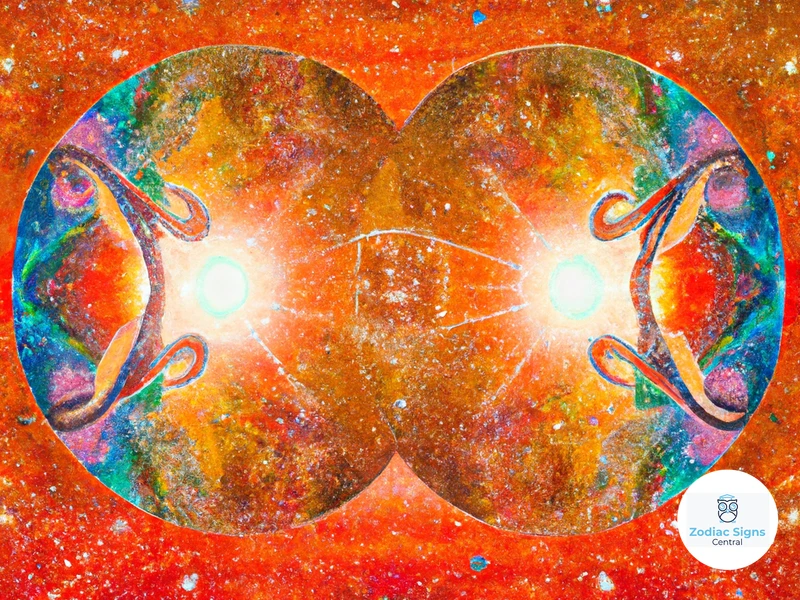
In conclusion, understanding the influence of planetary aspects on relationship compatibility is a fascinating journey into the depths of astrology. These aspects, such as conjunctions, squares, trines, sextiles, and oppositions, play a significant role in shaping the dynamics of a relationship. While harmonious aspects can indicate compatibility, shared values, and ease of communication, challenging aspects can highlight areas of tension and conflict that require understanding and compromise.
By analyzing planetary aspects in a birth chart and comparing them to a partner’s chart, astrologers can provide valuable insights into the strengths and challenges within a relationship. Composite charts and synastry techniques further enhance the understanding of relationship dynamics, allowing individuals to navigate their connections with greater awareness.
It is essential to remember that while planetary aspects provide valuable information, they do not determine the success or failure of a relationship. Building strong, healthy, and fulfilling connections requires open communication, emotional intelligence, and a willingness to grow together. Astrology can serve as a guiding tool, helping individuals navigate and understand the energies at play in their relationships.
To further explore the world of astrology and its impact on relationships, you may find it beneficial to delve into topics like the healing power of crystals in astrology or seek guidance in finding your astrology soulmate. Remember, astrology is an art that offers insights and guidance, but ultimately, it is up to individuals to create their own paths of love and connection.
Frequently Asked Questions
1. Can planetary aspects determine the success of a relationship?
While planetary aspects play a significant role in relationship dynamics, they are not the sole determining factor of success. Other factors such as communication, compatibility, and personal growth also contribute to the overall outcome of a relationship.
2. Are some planetary aspects more compatible than others?
Yes, certain aspects, such as trines and sextiles, are generally considered more harmonious and compatible. However, it’s important to remember that compatibility is a complex interplay of multiple factors in astrology, and individual birth charts need to be analyzed in detail to assess overall compatibility.
3. Can challenging aspects in a relationship be overcome?
Challenging aspects can indeed be overcome with conscious effort, self-awareness, and effective communication. It requires understanding the potential conflicts and working together to find resolutions and compromises that honor both individuals’ needs.
4. Can planetary aspects change over time?
The position and aspects of planets in a birth chart are fixed at the time of birth. However, as planets move through their orbits, they form different aspects with other planets, potentially influencing the energies and dynamics within a relationship.
5. How can I know whether a planetary aspect is affecting my relationship?
Consulting with an experienced astrologer can provide insights into the planetary aspects in your birth chart and how they may be influencing your relationship. They can help you understand the strengths, challenges, and growth opportunities within your unique dynamic.
6. Do all planetary aspects have equal impact on a relationship?
No, the impact of planetary aspects can vary depending on the individual chart and the specific planets involved. Some aspects may have a stronger influence, while others may be more subtle. The overall configuration and combination of aspects create a unique relationship dynamic.
7. Can planetary aspects change the outcome of a relationship?
Planetary aspects can indeed influence the outcome of a relationship, as they shape the energies and interactions between individuals. However, it is essential to remember that life is a blend of destiny and free will, and individuals have the power to make choices that can alter the course of their relationships.
8. Can planetary aspects help explain patterns in relationships?
Yes, studying the planetary aspects in a person’s birth chart and analyzing patterns can provide valuable insights into recurring themes and dynamics in relationships. This self-awareness can empower individuals to make conscious choices and break any negative patterns.
9. Are there any planetary aspects that indicate soulmate connections?
While there is no single aspect that guarantees a soulmate connection, certain aspects, such as conjunctions involving personal planets like the Sun or Moon, can indicate a strong soul connection and profound compatibility between individuals.
10. How can I use planetary aspects to improve my relationship?
Understanding the planetary aspects in your birth chart and your partner’s chart can help you gain valuable insights into your relationship dynamics. This self-awareness allows you to consciously work on areas of challenge, enhance communication, and deepen your connection, ultimately leading to personal growth and relationship improvement.
References
Frequently Asked Questions
1. How do planetary aspects influence relationship compatibility?
Planetary aspects refer to the angles formed between planets in a birth chart. These aspects have a significant influence on relationship compatibility as they reveal the dynamics and energy exchange between individuals.
2. What are the key planetary aspects that affect compatibility?
The key planetary aspects that affect compatibility include Sun-Moon aspects, Venus-Mars aspects, Mercury-Jupiter aspects, Saturn-Uranus aspects, and Neptune-Pluto aspects. Each of these aspects holds specific meanings and contributes to different aspects of a relationship.
3. How do Sun-Moon aspects impact relationship compatibility?
Sun-Moon aspects involve the connection between the core self (Sun) and emotions (Moon). Positive aspects between these two planets enhance emotional understanding and compatibility, while challenging aspects may result in emotional conflicts.
4. What role do Venus-Mars aspects play in relationship compatibility?
Venus represents love and attraction, while Mars represents passion and drive. Harmonious Venus-Mars aspects can enhance physical chemistry and romance, while challenging aspects may lead to power struggles and volatility in relationships.
5. What does Mercury-Jupiter aspect indicate about relationship compatibility?
Mercury represents communication and Jupiter represents expansion and growth. Positive Mercury-Jupiter aspects indicate intellectual compatibility and shared values, while challenging aspects may result in misunderstandings or differences in beliefs.
6. How do Saturn-Uranus aspects influence relationship compatibility?
Saturn represents structure and stability, while Uranus represents unpredictability and innovation. Harmonious Saturn-Uranus aspects can bring a balance between tradition and uniqueness, while challenging aspects may create tension between stability and change.
7. What does the Neptune-Pluto aspect reveal about relationship compatibility?
Neptune represents dreams and illusions, while Pluto represents transformation and intensity. Positive Neptune-Pluto aspects indicate a deep spiritual connection and transformative experiences, while challenging aspects may bring power struggles and emotional intensity.
8. How can harmonious aspects contribute to relationship compatibility?
Harmonious aspects between planets in a birth chart indicate a natural flow of energy and compatibility. These aspects can enhance emotional understanding, communication, and overall harmony in a relationship.
9. What challenges can arise from challenging aspects in relationship compatibility?
Challenging aspects in relationship compatibility can lead to conflicts, misunderstandings, and power struggles. These aspects may require effort and compromise to overcome, but they can also bring growth and transformation to a relationship.
10. How do composite charts and synastry play a role in assessing relationship compatibility?
Composite charts and synastry involve analyzing the combined birth charts of individuals in a relationship. These techniques provide deeper insights into the dynamics and compatibility between partners, considering the planetary aspects and positions in both charts.




